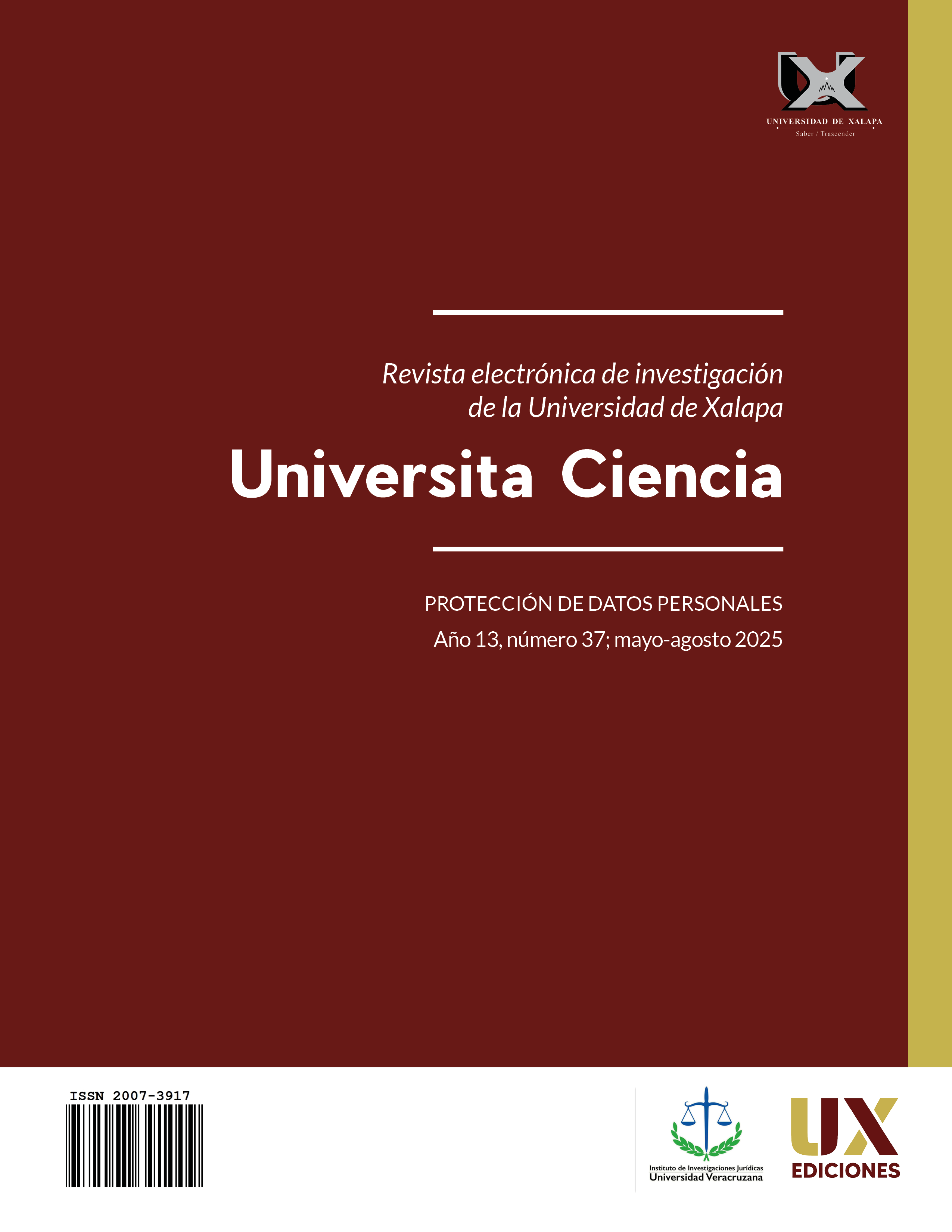China's influence in Africa: the Belt and Road Initiative
DOI:
https://doi.org/10.5281/zenodo.16423428Keywords:
BRI, Africa, China, Foreign PolicyAbstract
The Belt and Road Initiative (BRI) is a Chinese global infrastructure project that seeks to revitalize the ancient Silk Road. In Africa, the BRI has financed projects in sectors such as energy, telecommunications, and transportation, with the aim of increasing regional connectivity and economic integration. However, China’s growing influence in Africa has raised concerns about debt sustainability and economic dependence on China. This article analyzes the influence of the BRI in Africa, covering its progress, Sino-African economic relations, and its multifaceted implications. To do this, a qualitative methodology was used that allowed for the review of empirical evidence from the most relevant texts on the subject, and thus to examine the progress of the BRI on the African continent, as well as the relationships and interactions between China and Africa, and the implications of these relationships. It is concluded that the BRI has left a considerable mark on the interactions between China and Africa. Despite having fostered economic and social advantages, it is imperative to address the obstacles in order to ensure sustainable and inclusive progress on the continent. It is necessary to promote greater transparency, involvement of local communities, and responsible debt management, with the aim of maximizing the benefits of the initiative and mitigating potential risks.
Metrics
References
AidData. (2024). Project ID: 59375. China Eximbank provides $344.4 million preferential buyer’s credit for Phase 1 of Doraleh Multipurpose Port and the Damerjog Livestock Export Terminal Project (Linked to Project ID#91872). https://china.aiddata.org/projects/59375/
Alden, C. y Jiang, L. (2019). Brave new world: Debt, industrialization and security in China–Africa relations. International Affairs, 95(3), 641-657.
Ayodele, T. y Sotola, O. (2014). China in Africa: An evaluation of Chinese investment (Working Paper Series, pp. 1–20). Initiative for Public Policy Analysis.
Banco Mundial. (2024). China. Databank. https://datos.bancomundial.org/pais/china?view=chart
Brosig, M. (2021). A role model for Africa or exceptional engagement? Assessing China's South Sudan experience. En S. Zhao (Ed.), China’s big power ambition under Xi Jinping (pp. 256–270). Routledge. https://doi.org/10.4324/9781003198871
Cabestan, J. P. (2021). China's military base in Djibouti: A microcosm of China's growing competition with the United States and new bipolarity. En S. Zhao (Ed.), China’s big power ambition under Xi Jinping (pp. 169–185). Routledge. https://doi.org/10.4324/9781003198871
Chang, Y. (2019). Understanding the Belt and Road Initiative (BRI): An initiative to make China great again? European Journal of East Asian Studies, 18(1), 7–35.
Chen, L. (2023). China’s special economic zones and the industrialisation of Africa. Journal of Sino-African Studies, 2(1), 1–20.
Deych, T. (2019). China in Africa: A case of neo-colonialism or a win-win strategy? Outlines of Global Transformations: Politics, Economics, Law, 62–82. https://doi.org/10.23932/2542-0240-2018-11-5-119-141
Dutton, P., Kardon, I. y Kennedy, C. (2020). Djibouti: China's first overseas strategic strongpoint. China Maritime Studies Institute, US Naval War College. https://digital-commons.usnwc.edu/cgi/viewcontent.cgi?article=1005&context=cmsi-maritime-reports
Ehizuelen, M. (2017). More African countries on the route: The positive and negative impacts of the Belt and Road Initiative. Transnational Corporations Review, 9(4), 341–359.
Fijalkowski, L. (2014). China's ‘soft power' in Africa? En I. Taylor, D. Kopinski y A. Polus (Eds.), China's rise in Africa (pp. 223–232). Routledge.
Fu, Y. y Eguegu, O. (2021). Mapping the future of China–Africa relations: How the continent can benefit (Occasional Paper 333). South African Institute of International Affairs. https://saiia.org.za/wp-content/uploads/2021/11/Occasional-Paper-333-fu-eguegu.pdf
Githaiga, N., Burimaso, A., Wang, B. y Ahmed, S. M. (2019). The Belt and Road Initiative: Opportunities and risks for Africa’s connectivity. China Quarterly of International Strategic Studies, 5(1), 117–141.
Han, X. y Webber, M. (2020). From Chinese dam building in Africa to the Belt and Road Initiative: Assembling infrastructure projects and their linkages. Political Geography, 77, Artículo 102102. https://doi.org/10.1016/j.polgeo.2019.102102
Hörter, A. (2023). China's footprint in Africa: Unpacking Beijing’s influence on politics, societies. Stiftung Wissenschaft und Politik. https://policycommons.net/artifacts/4471394/chinas-footprint-in-africa/5268724/
ITC, International Trade Centre. (2024). Trade Map. África. https://www.trademap.org/Bilateral_TS.aspx
Jinping, X. (2015). Xi Jinping: The governance of China (Vol. I). Foreign Languages Press.
Johnston, L. A. (2019). The Belt and Road Initiative: What is in it for China? Asia & the Pacific Policy Studies, 6(1), 40–58.
Kalu, K. y Aniche, E. T. (2020). China-Africa economic relation: A double-edged sword for Africa. African Journal of Economic and Sustainable Development, 7(4), 374–390.
Ke, X., Lin, J., Fu, C. y Wang, Y. (2020). Transport infrastructure development and economic growth in China: Recent evidence from dynamic panel system-GMM analysis. Sustainability, 12(14), Artículo 5654.
Large, D. (2021). China and Africa: The new era. John Wiley & Sons.
Large, D. (2022). China, Africa and the 2021 Dakar FOCAC. African Affairs, 121(483), 299–319.
Li, X., Gu, J., Leistner, S. y Cabral, L. (2018). Perspectives on the Global Partnership for Effective Development Cooperation. IDS Bulletin Transforming Development Knowledge, 49(3), 145–166.
Lisinge, R. (2020). The Belt and Road Initiative and Africa’s regional infrastructure development: Implications and lessons. Transnational Corporations Review, 12(4), 425–438.
Liu, H. (2022). China engages the Global South: From Bandung to the Belt and Road Initiative. Global Policy, 13(Suplemento S1), 11–22.
Lokanathan, V. (2020). China’s Belt and Road Initiative: Implications in Africa (ORF Issue Brief No. 395). Observer Research Foundation.
Merino, G., Regueiro, L. y Tadeu, W. (Coords.). (2022). China y el nuevo mapa del poder mundial: Una perspectiva desde América Latina. CLACSO.
Nedopil, C. (2023). China Belt and Road Initiative (BRI) Investment Report 2022. Green Finance & Development Center, Fudan University.
Otele, O. M. (2020). China, region-centric infrastructure drives and regionalism in Africa. South African Journal of International Affairs, 27(4), 511–532.
Rolland, N. (2020). China’s vision for a new world order. The National Bureau of Asian Research.
SAIS-CARI. (2024). Chinese investment in Africa. https://www.sais-cari.org/chinese-investment-in-africa
Scott, R. (2019). China's military activities in Africa [Tesis de maestría, Marine Corps University]. https://apps.dtic.mil/sti/citations/AD1177390
Shen, X. (2013). Private Chinese investment in Africa: Myths and realities (Policy Research Working Paper 6311). Banco Mundial. http://bit.ly/3IEZAya
Shinn, D. (2023). China in Africa. En J. Harbeson y D. Rothchild (Eds.), Africa in world politics (pp. 213–234). Routledge.
Taylor, I. y Zajontz, T. (2020). In a fix: Africa’s place in the Belt and Road Initiative and the reproduction of dependency. South African Journal of International Affairs, 27(3), 277–295.
Wang, J. y Zou, J. (2014). China goes to Africa: A strategic move? Journal of Contemporary China, 23(90), 1113–1132.
Wang, L. (2020). China and the United States in Africa: Competition or cooperation? China Quarterly of International Strategic Studies, 6(1), 123–141.
Xing, L. y Farah, A. O. (2016). China-Africa relations in an era of great transformations. Routledge.
Published
How to Cite
Issue
Section
License

This work is licensed under a Creative Commons Attribution-NonCommercial-ShareAlike 4.0 International License.
This journal adheres to the Creative Commons license in the definition of its policy of open access and reuse of published material, in the following terms:
- Accessibility to articles and other publications in whole or in part under the concept of copying, distribution, public communication , interactive access (through the Internet or other means), explicitly maintaining the recognition of the author or authors and the journal itself (authorship acknowledgment).
- Warning that if the articles are remixed, modified or fragments used in other creations, the modified material cannot be distributed, nor is it allowed to reconstruct versions from the original published articles (derived works).
- The use of the contents of the published articles, in whole or in part, for profit (non-commercial recognition) is prohibited.
The author retains copyright, transfers or grants exclusive commercial rights to the publisher, and a non-commercial license is used.














